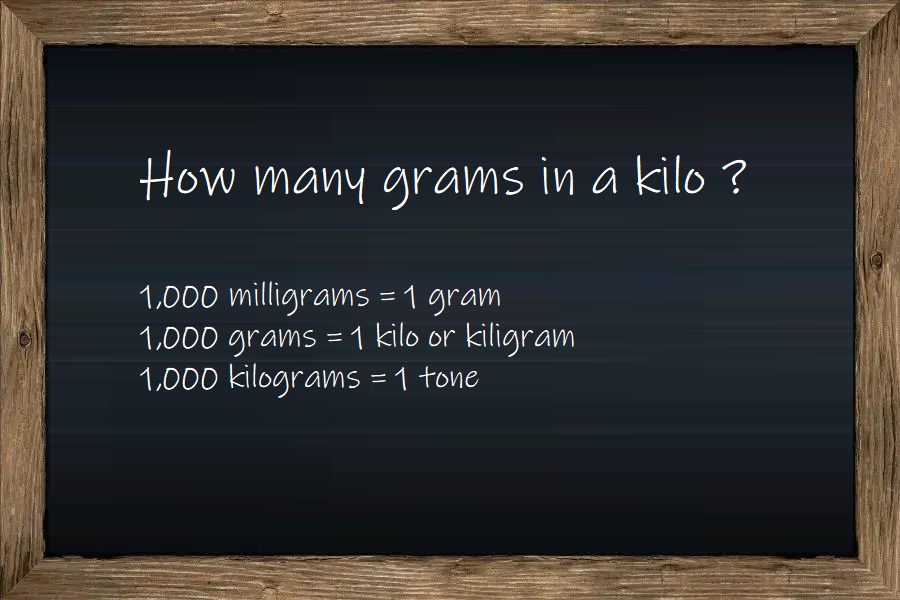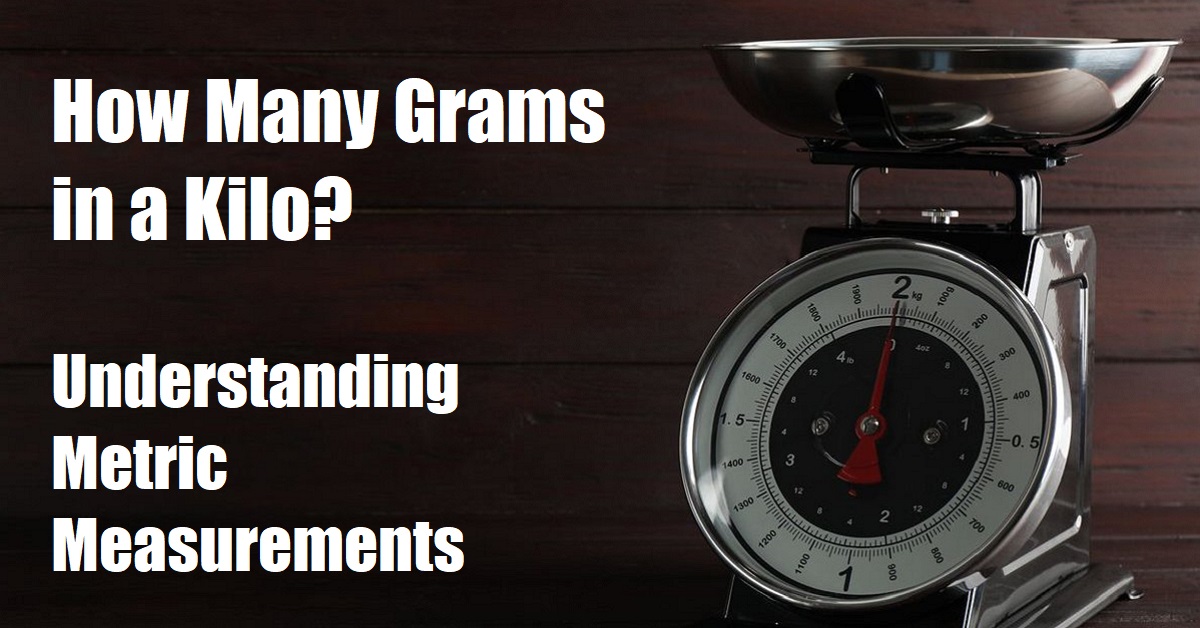Are you thinking “how many grams in a kilo” If you’re looking to understand complete metric system and its units of measurement, you’re on the right place. In this article, we’ll explore the relationship between grams and kilos and providing you complete understanding of metric measurements. In case, you’re a student, a professional, or simply someone looking to know metric system, this article will be a most comprehensive guide for you.

Also Read: How Many Ounces is 1/3 Cup – A Simple Conversion Guide
The Metric System: An Overview
Let’s start with an overview of the metric system. It’s a decimal-based system of measurement used worldwide for its simplicity and consistency. When it comes to measuring mass, the base unit in the metric system is the gram. We’ll explore how this unit relates to the kilo, which is commonly used for larger quantities.
What is a Gram?
A gram is the fundamental unit of mass in the metric system. It’s like the building block of measurement. Think of it as the weight of a small paperclip or a single raisin. Grams are used when you need to measure the mass of small objects or substances accurately.
What is a Kilo?
Now, let’s discuss about the kilo or kilogram. You’ve probably heard the weight term “kilogram”. A kilo is simply a shorter way of saying kilogram. It represents a larger unit of mass in the metric system. One kilo is equal to 1000 grams. Picture a bag of sugar or a small watermelon. That’s roughly one kilo in weight.
Conversion: Grams to Kilos
Converting grams to kilos is quite simple. Since 1 kilogram is consist of 1000 grams, you can simply divide the grams value by 1000 to get the weight in kilos or kilograms. i.e. if you have 5000 grams, than divide it by 1000, and the result will be 5 kilos.
Conversion: Kilos to Grams
Converting kilos back to grams is just as easy. You need to multiply the number of kilos by 1000. For example, you have 3.5 kilograms, than multiply it by 1000, and you’ll get the result, 3500 grams.
Also Read: What is 19 cm to Inches? Converting Measurements Made Easy
Practical Applications of Grams and Kilos
Now that you have clear understanding about grams and kilos, let’s explore now their practical applications. In the kitchen, grams are commonly used in recipes to ensure precise measurements of ingredients. If you’ve ever followed a recipe and seen measurements like “50 grams of flour” or “100 grams of sugar,” those are grams at work.
Grams and kilos also play a crucial role in scientific research. When scientists conduct experiments, they need accurate measurements of the mass of substances or specimens. Grams and kilos are used to obtain precise data and ensure consistent results.
Also Read: What is 53 Inches into Feet? A Simple Conversion
Moreover, various industries rely on grams and kilos for their measurements. Manufacturers need precise mass measurements for quality control in their production processes. Pharmaceutical companies carefully measure the weight of active ingredients in medications. Even in our daily life, when you check your weight on a scale, you’re measuring your weight in kilograms.
Understanding Metric Prefixes
To make the metric system even more versatile, it uses prefixes to indicate different orders of magnitude. These prefixes, such as milli-, centi-, and kilo-, allow for measurements both smaller and larger than the base unit.
For example, a gram is consist of 1000 milligrams. It’s like a tiny speck of dust on your fingertip. And other hand, one kilogram is one thousand times bigger than a gram. It represents more substantial quantities, such as the weight of a big bag of groceries.
Converting Other Metric Units to Grams and Kilos
Besides grams and kilos, there are other metric units that can be converted to these base units. Let’s take a quick look at some of them:
- Milligrams (mg): These are even smaller than grams. They are one thousandth of a gram, so 1000 milligrams make up one gram.
- Decigrams (dg) and centigrams (cg): These fall between grams and milligrams. One decigram is equivalent of one-tenth of a gram, and other hand one centigram is equivalent of one-hundredth of a gram.
- Decagrams (dag): This unit is larger than a gram. It’s equal to ten grams.
- Metric tons (t): If you’re dealing with massive quantities, you might encounter metric tons. One metric ton is equivalent to 1000 kilos.
Common Mistakes to Avoid
When working with grams and kilos, it’s essential to be mindful of some common mistakes. Here are a few to keep in mind:
- Decimal Placement: Pay close attention to decimal placement when performing conversions. A misplaced decimal point can drastically change the result.
- Conversion Factors: Remember to use the correct conversion factor. For example, dividing by 1000 when converting grams to kilos, or multiplying by 1000 when converting kilos to grams.
- Consistent Units: Ensure that you’re using the appropriate units throughout your calculations and measurements.
Tips for Efficient Conversion
Converting between grams and kilos becomes more natural with practice. Here are some tips to make the process more efficient:
- Memorize the Conversion Factor: Remembering that there are 1000 grams in a kilo can save you time during calculations.
- Online Conversion Tools: Utilize online conversion tools or mobile apps to perform quick and accurate conversions.
- Visualize Everyday Objects: Associate grams with small, everyday objects and kilos with larger items to develop a better sense of the measurements.
The Importance of Accurate Measurements
Accurate measurements are vital in various aspects of life. In scientific experiments, precise measurements ensure reliable data and support the validity of research findings. Industries rely on accurate mass measurements for quality control, ensuring that products meet certain standards. Whether it’s in cooking, manufacturing, or scientific research, accurate measurements are the foundation of consistency and reliability.
Also Read: What is 37 Fahrenheit in Celsius – The Ultimate Guide
Conclusion
Congratulations! You now have a solid understanding of the relationship between grams and kilos. With 1000 grams in a kilo, you can easily convert between the two units using simple multiplication or division. Remember to pay attention to decimal placement and use the appropriate unit based on the quantity you’re measuring. Accurate measurements are key to successful cooking, scientific experiments, and various industries.
FAQs
Q1: Is there a difference between a gram and a milligram? Yes, there is a difference. A milligram (mg) is one thousandth of a gram, which means it is smaller than a gram.
Q2: Can I use grams and kilos interchangeably? While grams and kilos are related, they represent different orders of magnitude. It’s important to use the appropriate unit based on the quantity you need to measure.
Q3: Are there any other units of mass in the metric system? Yes, the metric system offers various units of mass, such as milligrams, decigrams, centigrams, and metric tons, in addition to grams and kilos.
Q4: Can grams and kilos be used to measure liquids? Grams and kilos are primarily used for measuring the mass of solid objects. When it comes to measuring liquids, milliliters (ml) and liters (L) are commonly employed. The volume of a liquid is a different concept from its mass.
Q5: Are there any exceptions to the grams-to-kilos conversion factor? No, the conversion factor remains consistent. There are always 1000 grams in a kilo. This relationship holds true, making conversions between the two units straightforward and reliable.
In conclusion, understanding the relationship between grams and kilos is key to navigating the metric system with confidence. Grams serve as the foundation for measuring small objects, while kilos encompass larger quantities. With simple conversion factors and attention to decimal placement, you can easily convert between grams and kilos. Remember to use the appropriate units based on the context of your measurements.
Also Read: 7 Money Rules you didn’t learn in school
